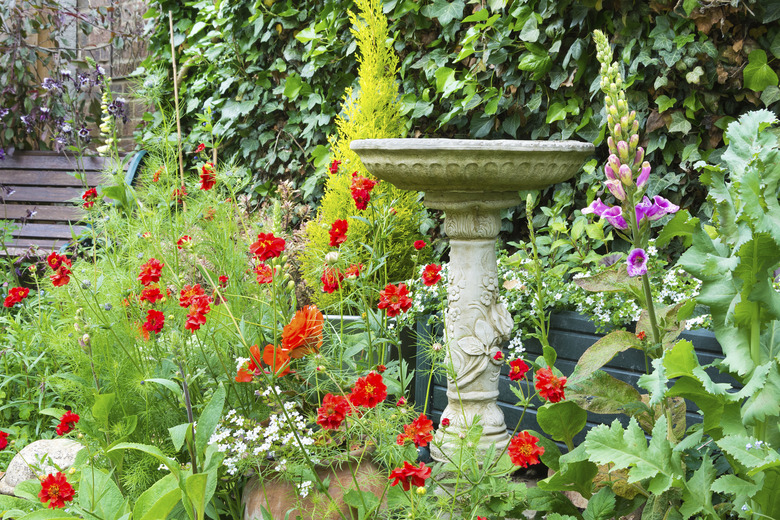How To Make Concrete Slurry
Slurry plays a key role in constructing concrete structures such as walls, as well as decorative elements such as birdbaths and benches. Its smooth, thick texture allows it to fill minute holes and pits in a structure, creating a smooth surface for binding layers of concrete. While simple to make, concrete slurry has a limited shelf life — you must mix it in small batches and use it immediately to prevent unwanted waste.
Basic Ratio and Additives
Basic Ratio and Additives
The ideal texture of concrete slurry is thick and pasty with a consistency similar to tempera paint. If the slurry is too runny or too thick, it will not adequately adhere to the concrete surface and will prevent bonding between the concrete layers. The ratio for a basic concrete slurry mix is 1 or 2 parts Portland cement to 1 part water. Start with equal parts cement and water, and then add more cement until you have the desired consistency. Fortified concrete slurry varies slightly because it replaces some of the water with a polymer admixture for strength and flexibility. Combine equal parts concrete and polymer admix with no more than 1/4 part water.
Safety First
Safety First
Concrete slurry may pose a safety hazard in both its dry and wet forms, so observe basic safety precautions while working with it. Inhaling cement dust can cause irritation in the mucus membranes, so wear a dust mask when mixing the components. Wear eye goggles and gloves to minimize contact between the cement and the skin and eyes, along with a long-sleeved top and long pants. Keep a bucket of clean water nearby to rinse off tools, and use waterproof pads if you're kneeling in your work area to keep the slurry from absorbing through your pants.
Tools and Mixing Instructions
Tools and Mixing Instructions
Using the right tools helps any project come out better, including mixing concrete slurry. A mortar box or other plastic tub large enough to hold the required amount of finished product is vital, as are wooden stir sticks usually used for mixing paint. Add the dry Portland cement into the mortar box first, pouring carefully to help minimize dust, and then add the required amount of water. Stir slowly, incorporating the water into the cement until a thick paste forms. If the slurry is too thick, add more water — a few tablespoons at a time — until the desired consistency is achieved. The slurry will begin to harden once the hydration process begins, so use it within an hour and discard the rest.
Disposal Tips
Disposal Tips
Concrete slurry is highly alkaline and may cause damage to plants and animals if disposed of improperly. Incorrect disposal methods may also earn you a citation or fine, depending on local regulations. The best way to dispose of leftover slurry is to cover it with clean, clear water and let it sit overnight. Pour off the surface water the following morning, leaving only the sludge behind. The sludge can be scooped out, placed in plastic garbage bags and disposed of in the trash. However, be sure to double-bag it if it appears to be leaking.
